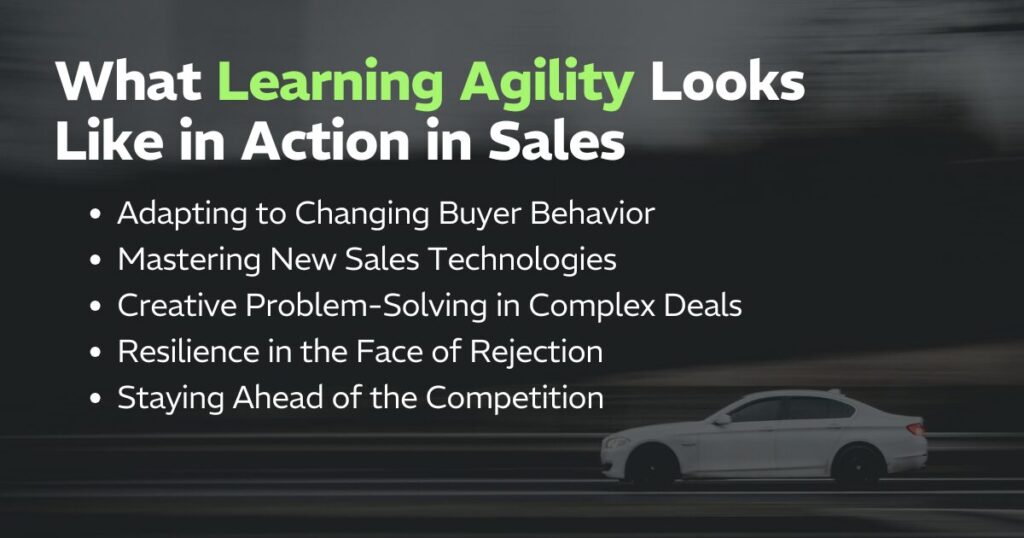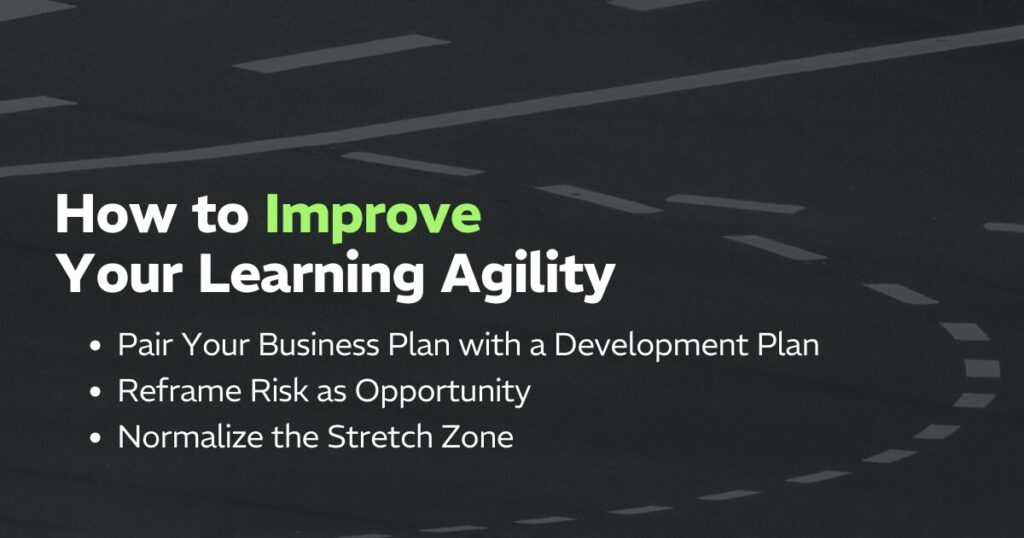Most of us can outline our business plans, KPIs, and five-year strategies without hesitation. But ask about a personal development plan? That’s a different story. We get so caught up in executing today’s priorities that we often forget to invest in the future—our own growth and that of our teams.
I’ve noticed that when my team hits a plateau, it’s often because I’ve let my own commitment to learning slide. That’s why I push myself to stay in what I call the learning lane—the space beyond our comfort zones where real growth and fresh opportunities take shape.
The most effective leaders are continuous learners. They challenge the status quo, seek new insights, and prioritize steady improvement. Research backs this up: Sales managers who coach their reps effectively see win rates increase by up to 14 percentage points. And companies that prioritize learning enjoy higher retention, greater innovation, and stronger revenue growth.
In fact, learning agility is now the No. 1 predictor of executive success.
What Is Learning Agility?
My favorite definition of learning agility is straightforward: it’s your ability to grow through change. To define learning agility more fully, it’s the willingness and capacity to quickly make sense of unfamiliar situations, learn from experience, and apply that learning to perform at a higher level—especially when the path forward isn’t obvious.
But the learning agility meaning goes deeper than just flexibility. It’s about staying open to feedback, unlearning outdated habits, and trying new approaches—even when they’re uncomfortable. People with high learning agility are adaptable, coachable, and constantly evolving. They don’t just keep up with change—they grow through it.
In fact, when we talk about learning agility in leadership, these are the traits that matter most. The best leaders today aren’t static experts. They’re dynamic learners—people who act with intention, adjust in real time, and model what it looks like to lead through uncertainty. As my friend Josh Linkner puts it, they start before they’re ready. That mindset isn’t about perfection. It’s about progress in motion.
There’s also a more structured way to measure and develop this skill. The Korn Ferry model and learning agility assessment breaks it down into five dimensions, including mental agility, people agility, and results agility. This framework helps organizations identify high-potential talent and build teams ready to thrive in fast-changing business environments.
If you’re serious about staying relevant, this is where it starts. The definition of learning agility isn’t just knowing more—it’s learning faster, adapting better, and leading smarter.
What Learning Agility Looks Like in Action in Sales
The best sales professionals make learning something new part of how they sell. They’re constantly scanning, adjusting, testing, and improving. They don’t wait for perfect conditions. They move forward, figure it out, and refine as they go. Here’s what that looks like in action.
Adapting to Changing Buyer Behavior
Today’s buyers conduct extensive research before engaging with sales. They expect sales professionals to add value beyond what they can find online. The best salespeople are agile learners who continuously study their customers’ evolving needs, industry trends, and competitive pressures to stay ahead.
Mastering New Sales Technologies
Sales technology is evolving rapidly, from AI-driven lead scoring to automated outreach tools and sophisticated CRMs. Sales professionals who embrace these tools and apply them effectively gain a significant competitive advantage. Those with high learning agility can quickly integrate new technologies into their workflows and optimize their sales processes in the most challenging situations.
Creative Problem-Solving in Complex Deals
No two deals are the same, especially in enterprise sales. Learning-agile individuals thrive in unpredictable environments, adjusting their approach based on shifting priorities and multi-stakeholder decision-making. They demonstrate mental agility by analyzing complex scenarios, identifying opportunities, and crafting tailored solutions.
Resilience in the Face of Rejection
Sales is full of ups and downs. Even top performers hear “no” far more often than “yes.” The difference lies in how they respond. Those with high learning agility reflect on their experiences, identify patterns, and refine their strategies for the next opportunity. They treat rejection as feedback and continuously iterate to improve their performance. This requires tremendous emotional intelligence.
Staying Ahead of the Competition
Sales success isn’t just about hard work—it’s about smart work. The best sales professionals build learning agility by seeking new knowledge, testing new strategies, and refining their approach based on data and insights. Those who embrace continuous learning don’t just keep up; they set the pace for the industry.

How to Improve Your Learning Agility in Sales
If you want to build learning agility across your team, you don’t necessarily need a new tool to assess learning agility. You need a shift in mindset—and a few simple but powerful leadership moves to help your people stretch, grow, and evolve. Here’s where to start.
Pair Your Business Plan with a Development Plan
You can’t scale performance without scaling capability. And that means building development into the rhythm of the business—not treating it like an afterthought.
What new skills are you building this quarter? Where are you seeing gaps? How is the organization investing in growth beyond the number?
Then make the answers to those questions visible. Create shared language around learning goals. Set aside time for reps to reflect on what they’re learning and where they’re stretching. Learning agility in the workplace doesn’t happen by accident. It happens by design.
Reframe Risk as Opportunity
Learning agility requires action—even when the outcome isn’t guaranteed. And that means getting comfortable with calculated risk.
Too often, people wait for certainty. They don’t pitch the bold idea. They don’t try the new approach. They default to what’s safe because they’re afraid of getting it wrong.
But growth lives on the other side of risk. And the best leaders know how to reframe that risk as opportunity.
Celebrate little experiments. Talk about lessons learned—not just wins. Share where you took a swing, and what you learned from it—especially if it didn’t go as planned.
It’s not about being reckless. It’s about making room for intentional action, even in uncertainty. That’s how learning gets real.
Normalize the Stretch Zone
Most people treat discomfort like a red flag. But in a high-performance culture, discomfort is a signal—it means you’re doing something that matters.
Great leaders help their teams operate in the stretch zone. That space just beyond what’s familiar, where learning happens fast and growth compounds. So encourage the rep who tries a new talk track. Back the teammate who speaks up in the meeting. Reinforce the effort, not just the outcome.
Creating this kind of environment is also one of the best ways to motivate your sales team and build long-term performance from the inside out.
And most importantly: Lead from the front. Share the places where you’re stretching. That kind of transparency builds a culture of accountability. Once stretch becomes normal, so does growth.

Build the Habit of Learning in Motion
In a world where strategies, technologies, and customer expectations shift fast, your biggest advantage isn’t what you know—it’s how quickly you can learn, apply, and adapt.
Learning agility is what turns experience into elevation. It’s what helps you course-correct in real time, grow through complexity, and lead with clarity even when the path forward isn’t obvious.
If you’d like to go deeper on building a culture of agility, resilience, and continuous growth, check out my Adapt & Thrive keynote. It’s built for leaders who want to future-proof performance by embedding learning into the rhythm of the business.










